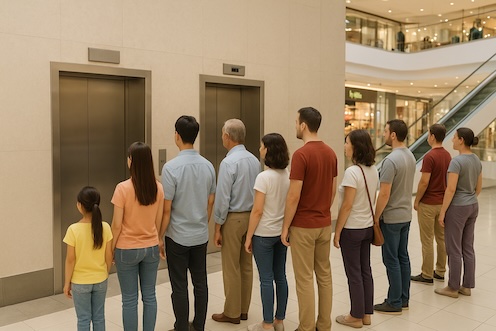A new supermarket in the core commercial district of a third tier city quickly attracted over 20000 daily customers with its "one-stop business model" positioning. However, just one month after opening, elevator congestion triggered a public opinion storm: customers complained that "waiting for the elevator is even more tiring than shopping in the mall", and some merchants saw a sharp decrease in foot traffic and joined forces in protest.

Design is inherently deficient
The mall only has four passenger elevators and two cargo elevators, and it was not estimated that the number of people during holidays could double to 40000. The elevator frequently stops, and the one-way travel time is too long. In addition, the distance from the escalator exit is less than two meters, forming a natural bottleneck. During peak hours, long queues even extended outside the shopping mall, with an average wait time of over 18 minutes as measured.
Maintaining the worsening problem of chaos
In the second week of opening, a passenger elevator was shut down due to a door lock sensor malfunction. The management did not make a timely announcement, and the maintenance team changed it to "random parking" in order to save time, resulting in repeated detours for passengers and further congestion. Even worse, maintenance is outsourced to an unprofessional team, often making it difficult to even identify component models.
Customer disappointment, damaged reputation
On social media platforms, the reading volume of 'XX mall elevator queue is too outrageous' has exceeded 500000. Netizens joked that "bringing children to stroll around, just waiting for the elevator makes you lose patience", while merchants bluntly stated that weekend foot traffic is 40% less than surrounding shopping malls. According to the 'peak to end law', the queuing experience during peak hours directly lowers overall satisfaction.
The Way to Improvement
Expert suggestion: Introduce AI to predict passenger flow and dynamically schedule, add independent freight elevator channels, and display real-time waiting time to alleviate anxiety; Sign an original factory maintenance contract and conduct regular stress tests to shorten response time. Only by incorporating elevator planning into core business strategies can shopping malls truly achieve 'customer retention'.
